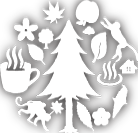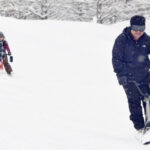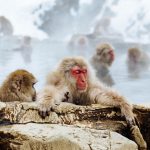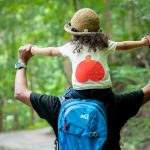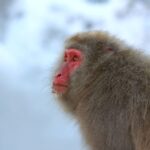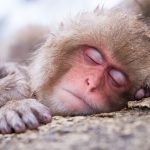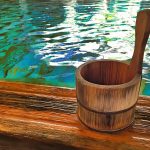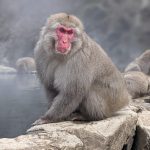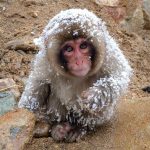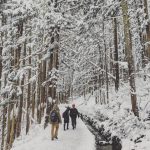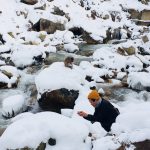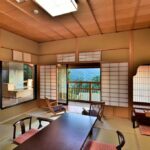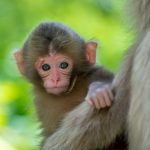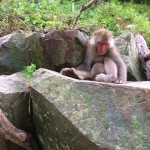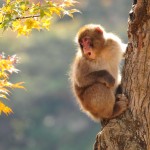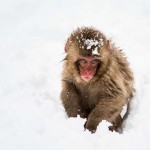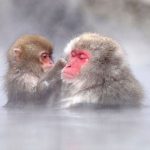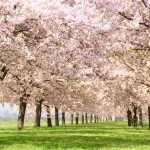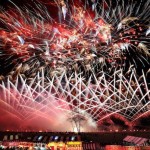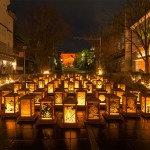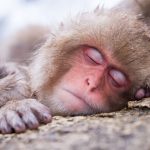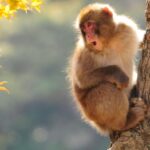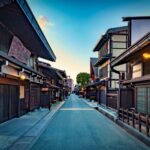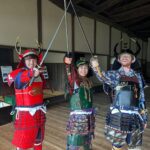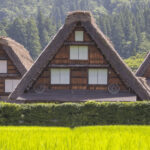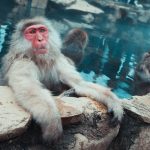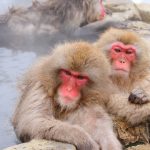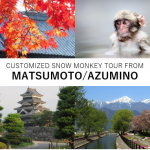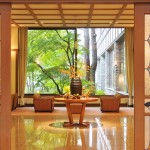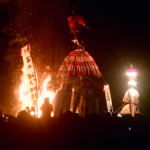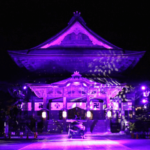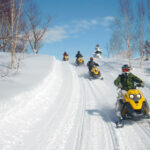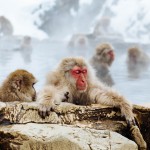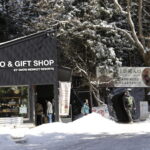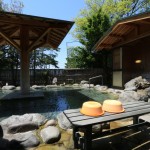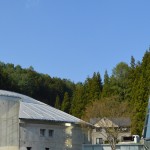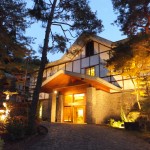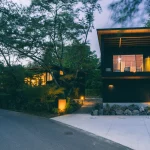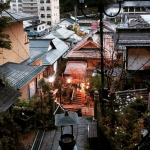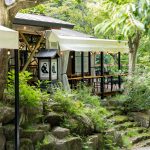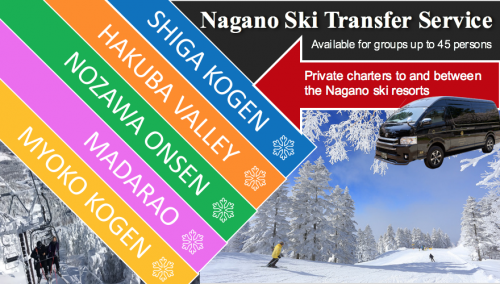The Snow Monkey FAQs
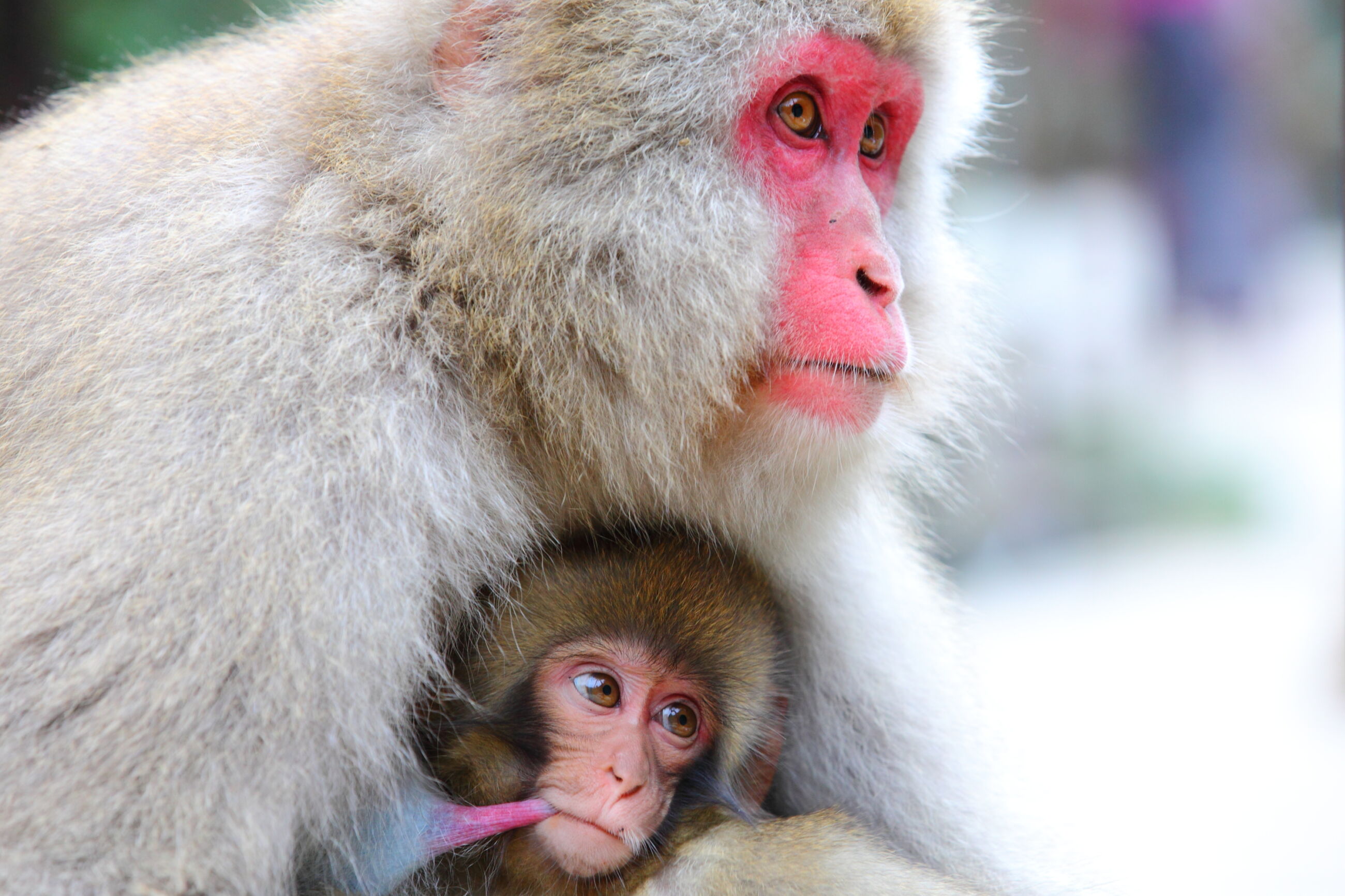
Located around 50-minutes from central Nagano City, the Jigokudani Monkey Park is open all-year-round and plays host to one very special troop of monkeys. The following page answers common questions about the Jigokudani Monkey Park. It is divided into two sections:
— Common Questions About Visiting the Park
— Common Questions About the Monkeys
— Tours and Charters to the Monkey Park
— Snow Monkey Resorts Info & Gift Shop
While most famous for their hot spring-loving antics of autumn and winter, the monkeys come to the park all-year-round and are just as reliable in spring and summer. When visiting the park, make sure to stop by the Snow Monkey Resorts Info & Gift Shop. Located at the entrance of the trail leading to the park, we have you covered for all your monkey needs.
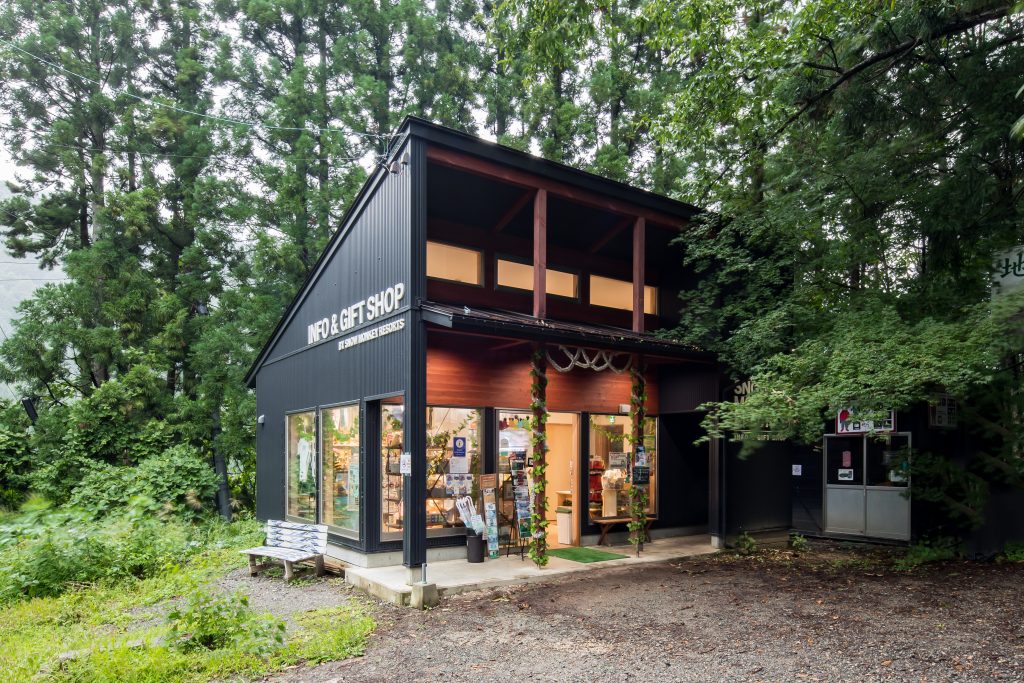
1 Day Tour
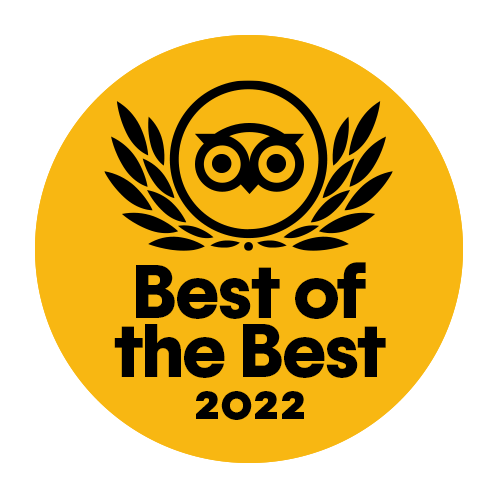
| 1-Day Tour: Snow Monkeys, Zenkoji Temple & Sake in Nagano | |
|
| |
| Period | All Year Round |
| Time | 09:35 – 17:35 |
| Meeting Place | Nagano Station Hakuba (winter only) |
| Adult Rate | ¥17,800 |
| Child Rate | ¥11,000 |

We hope this information helps you plan your visit and adds to your enjoyment of the park. Remember, our ‘Snow Monkey Park Information’ page provides everything you need to now regarding opening times, admission costs, access information etc.
QUESTIONS ABOUT VISITING THE PARK
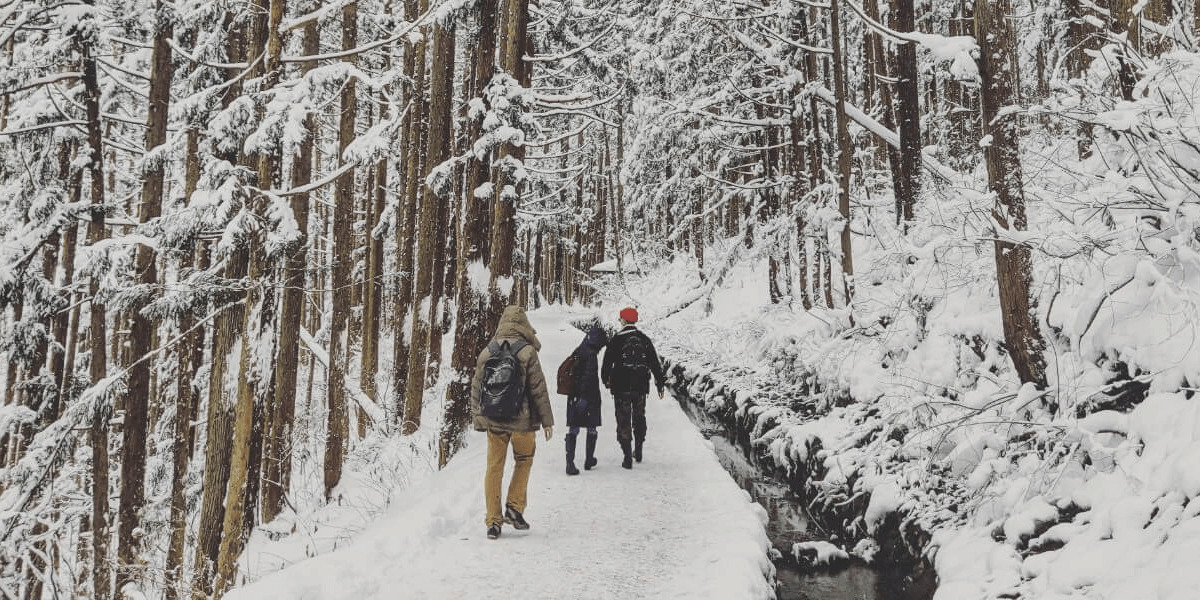
Fondly referred to as ‘snow monkeys’, the troop of wild monkeys that comes to the park actually does so throughout the year. So whether you’re visiting in winter, spring, summer or autumn, the park is open and the monkeys will almost certainly be there. Now, let’s jump into the questions!
Is the Snow Monkey Park and the Jigokudani Monkey Park the same thing?
Yes. The park is officially called the ‘Jigokudani Yaen Koen’ or Jigokudani Monkey Park but is often referred to as the Snow Monkey Park due to the monkeys ability to survive and thrive in the snow. So there is no need to be confused, as they are the same thing.
Is the park open everyday?
Yes. The park is open every day of the year* – however opening hours vary between winter and other times of the year due to changing weather conditions, hours of light, and seasonal behavior of the monkeys. From November to March, the park is open to the public from 09:00 until 16:00. From April to October, opening hours are extended to 08:30 until 17:00.
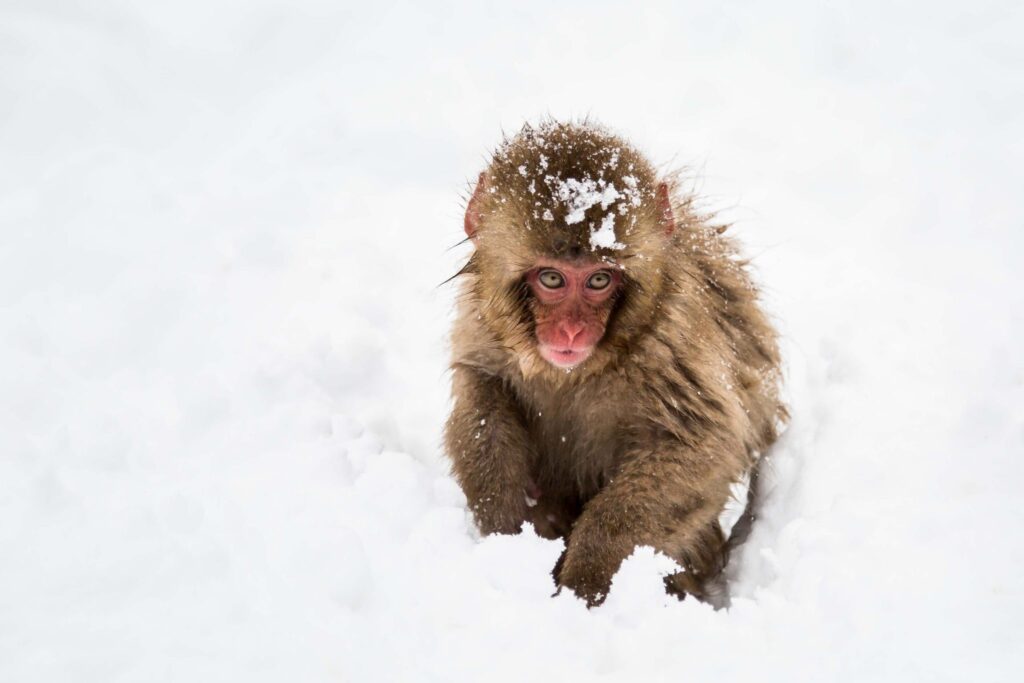
*The Snow Monkey Park is open 7-days a week and there are no fixed holidays in place. In the event of extreme weather, the park could close for the safety of guests and staff but such cases are very rare.
Do the monkeys come to the park every day, including outside of winter?
The monkeys are expected at the park everyday of the year, not just in winter. The park is situated within the territorial radius of this troop of monkeys meaning that coming into the park is a natural part of their daily activity. Furthermore, park rangers incentivize them to come with small amounts of food each day – further information about why they do this can be found on our ‘Snow Monkeys & Their Hot Spring: Why They Love It’ page. The troop is referred to as ‘snow monkeys’ due to their renowned ability to live and thrive in the depths of winter however don’t let this mislead you, they are just as comfortable in spring, summer, and autumn and come to the park at all times of the year.

It is important to note that the monkeys are wild. There are no barriers forcing them to stay in the park meaning that they are free to come and go as they please. It is therefore possible that occasionally only a small number of monkeys will come to the park on a particular day, or very rarely, none at all. While this can occur it is not common and most typically occurs in autumn when an abundance of wild fruits and nuts in the mountains, and mating season, can preoccupy the monkeys’ minds.
How much does it cost to enter & where do I buy a ticket?
Entry tickets are purchased at the ticket window at the entrance of the park. To reach that point, first you need to walk along the forest trail all the way to the park. Tickets cannot be purchased at any other point prior to that. Adults (18+) pay JPY800 per person, children (6-12) pay JPY400 while infants (0-5) can enter the park free of charge.
Can I bathe with the monkeys?
No. The hot spring in the park is only for the monkeys. If you want to try and take a bath with the monkeys, you might try your luck at the nearby Korakukan Onsen – the guesthouse where the monkeys first observed and copied the behavior of soaking in the hot spring. There is a possibility the monkeys will join you while you bathe in the open-air bath at the guesthouse (however we cannot guarantee how hygienic this is).
Can I feed, hold or touch the monkeys?
No. Under no circumstances are visitors to the park allowed to feed, hold or touch the monkeys. The park is first and foremost a conservation and research facility. Please ensure you follow the park rules at all times – as detailed in our ‘Snow Monkey Park General Information’ page.
Can I take photographs and videos?
Yes. You are welcome to take photographs and videos of the monkeys. Please be mindful that the monkeys are wild and allow them adequate space to go about their lives unhindered. Please also note that flash photography and underwater photography (i.e. putting camera gear in the hot spring) are not permitted. Use of specialist photography and filming equipment can only be used with the prior agreement of the park.
Are there restaurants and other facilities nearby the park?
Yes. The park is located in Kanbayashi Onsen, a small hot spring village with several guesthouses, restaurants and cafe, public toilets, public parking and public bus stops. Food and drinks cannot be taken from the restaurants or cafe along the trail and into the park. Doing so is likely to attract the attention of the monkeys and they will just as likely soon take them from you. Please ensure any food is inside your bag and cannot be seen by the monkeys. Water is fine but try to avoid drinking in front of the monkeys to avoid their attention.
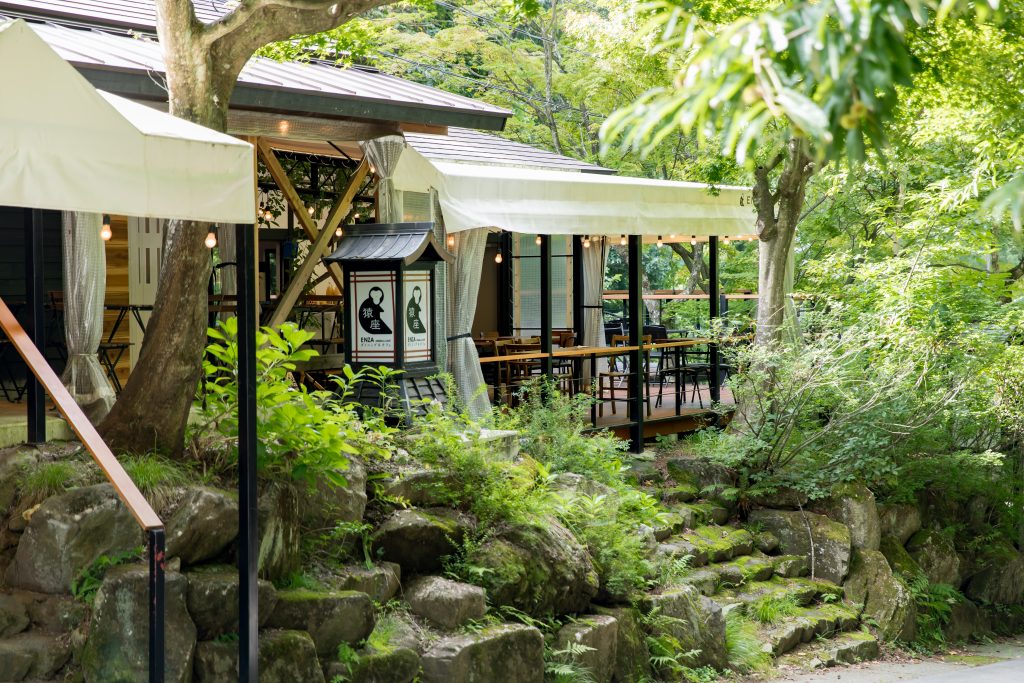
Only moments walk from the trail, Enza Cafe serves a great selection of Japanese and Western cafe food, including a takeaway window for guests to enjoy before or after venturing to the park.

A little further down the hill, Hotarutei serves an excellent Japanese menu in the historic surroundings of a 160 year old traditional mansion.
How do I access the park?
Access to the park is via a 1.6km / 1 mile forest trail. The trail is mostly level and well-maintained. Outside of winter, the trail takes most visitors around 20 to 25 minutes to walk (in both directions). During winter, due to snow and ice, the walk is more likely to take around 30 to 40 minutes. While the trail is mostly level, there is a 20 metre incline at the beginning and a steep staircase and upward path at the end, as you arrive at the park entrance. For visitors who are mobility impaired or in a wheelchair, these sections of the trail are problematic. It should also be noted that during winter or on days of heavy rain, when the trail can be muddy, use of a wheelchair will most likely be impossible.
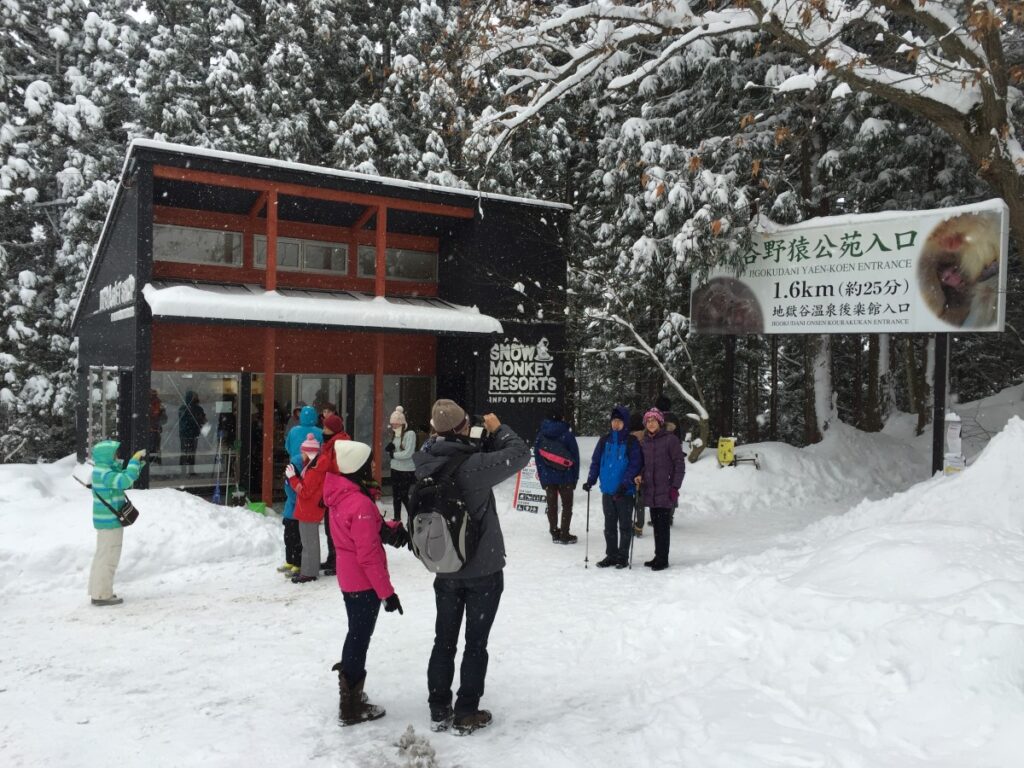
Our ‘Information About The Walk To The Snow Monkey Park’ page provides further information to assist with your preparation. Always consider your safety and make sure you are prepared for the likely conditions of snow and ice in winter. For information on how to get there from Nagano, nearby ski resorts, Tokyo and beyond, see our ‘How To Get To The Jigokudani Monkey Park’ main page.
1 Day Tour
| 1-Day Tour: Snow Monkeys & Snow Fun In Shiga Kogen | |
|
| |
| Period | December to March |
| Time | 08:45 – 17:30/18:00 |
| Meeting Place | Nagano Station Snow Monkey Park Area |
| Adult Rate | ¥21,800 |
| Child Rate | ¥13,300 |

One of the easiest ways to ensure a smooth trip to and from the park is to take part in a guided tour. Without the stress of needing to be on time for sometimes confusing public transportation, you are free to enjoy your walk to the monkey park within the time lines set by your guide instead of worrying about your next move.
Don’t have the right footwear or clothing / need assistance while at the park?
We’ve got you covered! Located next to the trail entrance, visitors to the park can’t miss the Snow Monkeys Resorts Info & Gift Shop. Offering a range of services including winter rentals and English language information, luggage storage, along with monkey merchandise and souvenirs including official Snow Monkey Resorts products, the SMR Info & Gift Shop has you covered when visiting the park. Open from early October until late May, 9AM to 5PM, English-speaking staff can answer your questions on your way to and from the park including bus timetables and information about nearby attractions.
Is there anything else to do around the park?
There’s plenty to do! The park lies within a wider region called Yamanouchi. It is a region that is home to multiple hot spring towns and villages, multiple ski resorts, lots of traditional guesthouses, farms and a large area of the expansive Joshinetsu Kogen National Park. Our ’25 Things To Do Around The Jigokudani Monkey Park & Where To Stay’ page has lots of suggestions of the best destinations and activities available nearby.
Is there any accommodation nearby the park?
Again, there is plenty! The park is located in the small hot spring village of Kanbayashi Onsen which has a handful of guesthouses. Nearby the park, Shibu Onsen and Yudanaka Onsen are larger, historic hot spring towns offering even more options, while the park is within easy reach of Shiga Kogen and Nagano City. Our ‘Where To Stay Around the Jigokudani Monkey Park’ page lists the best accommodation areas nearby.
COMMON QUESTIONS ABOUT THE MONKEYS
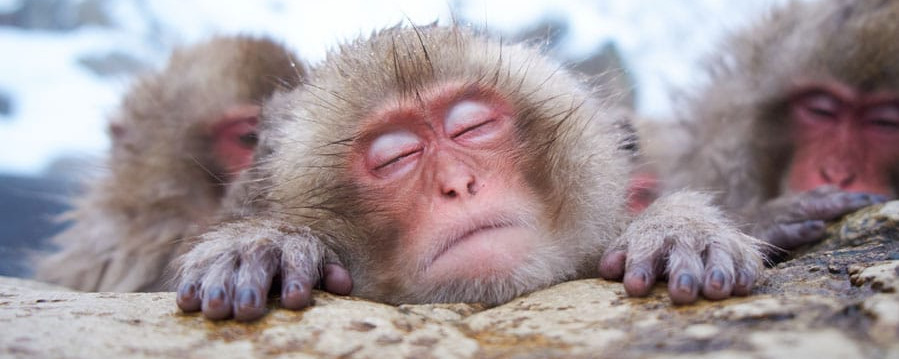
As the unofficial ambassadors of Nagano and the region, the monkeys have achieved fame both inside and outside Japan. But what makes them unique and why are they famous? Let’s start with exactly that question:
Why are the Snow Monkeys so famous?
While macaques are found throughout the Japanese main island of Honshu, and indeed there are many troops spread through the mountains surrounding the monkey park, this troop is remarkable for its behaviour of soaking in the hot springs – the only monkeys known to do so in the entire world. First captured on camera by Tomio Yamada during the 1950s, the monkeys’ fame went global when a photograph of them appeared on the cover of LIFE magazine in 1970.
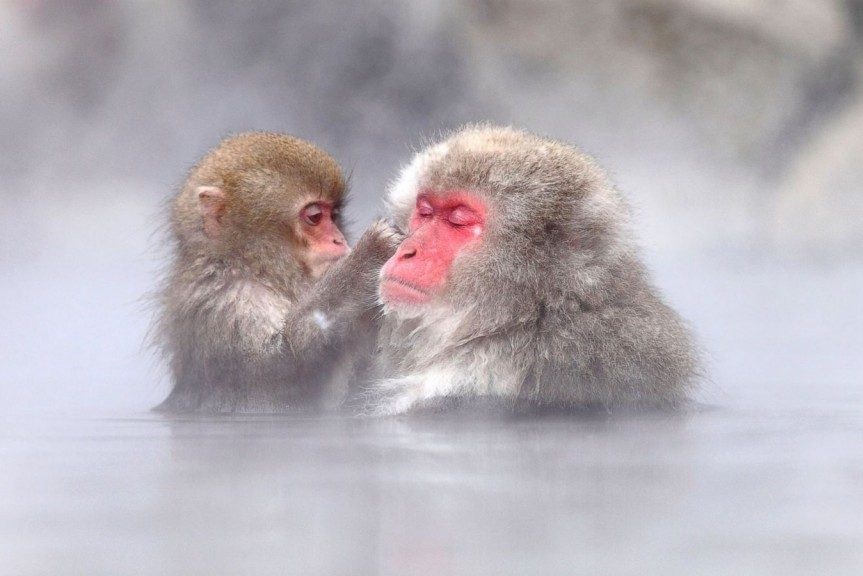
The park now attracts visitors from all over the world, who come to observe these curious and intelligent creatures in a near-natural environment. While they are more likely soak in the hot spring, and for longer, in winter, it is their collective character and range of captivating daily behaviors that make the park such a popular destination at all times of the year. These are endearing animals within whom you’ll recognize habits and patterns not so far removed from ours, and as such, the experience of visiting the park is often cited as a highlight and uniquely memorable part of any trip to Japan.
What kind of animal is the Japanese macaque?
Among the 180 species of monkeys that exist, the indigenous Japanese macaque is known to be the most northern non-human wild primate in the world. Most non-human primates tend to live in tropical or subtropical areas and the highly intelligent and adaptable macaques are no exception, being found throughout the main Japanese islands except for Hokkaido – from subtropical Kyushu in the south to the cold and snow of Nagano and beyond.
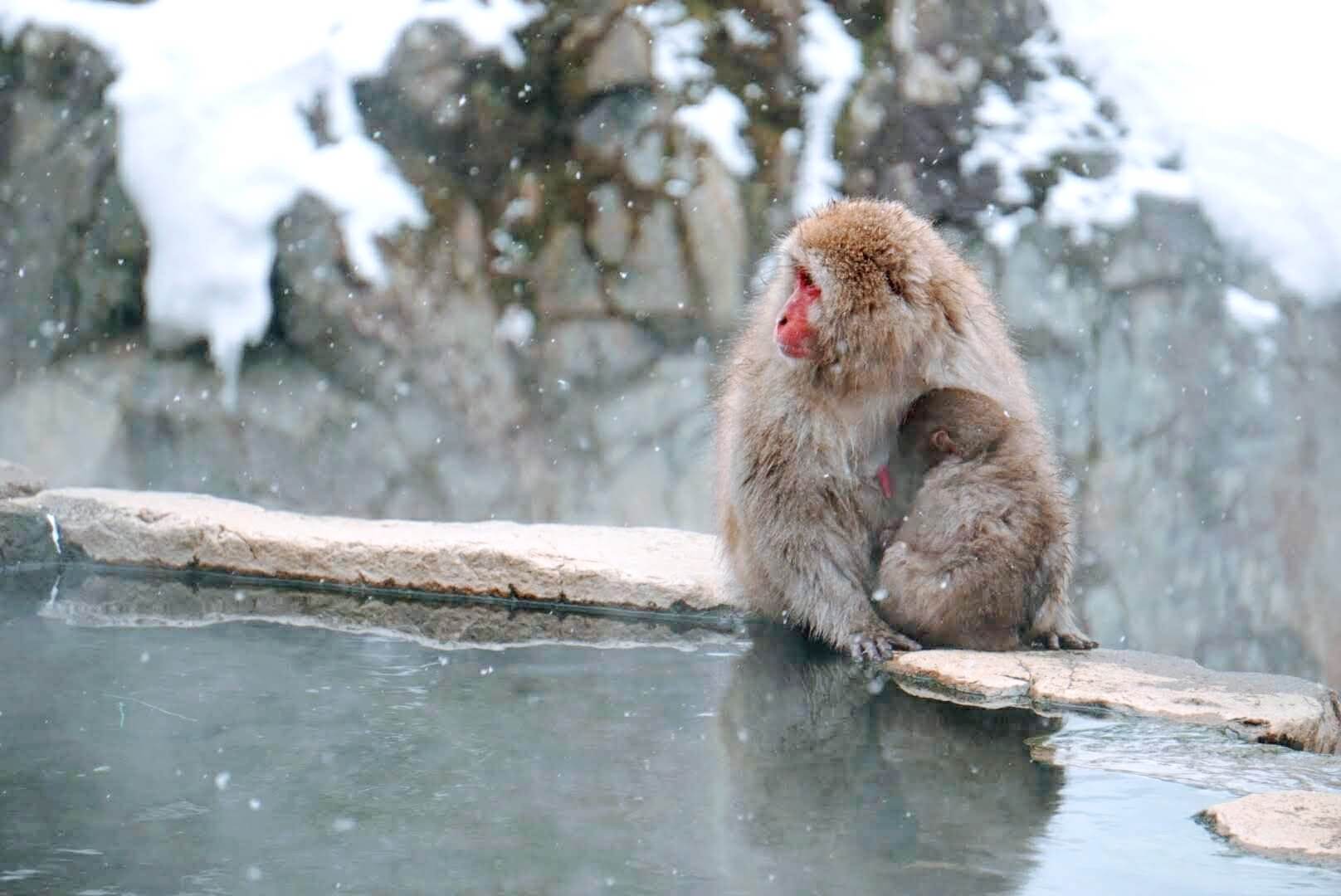
Macaques are indeed common in Japan however the troop residing in and around the Snow Monkey Park are famous for one unique reason – they are the only monkeys in the world known to enjoying soaking in hot springs. A behavior learned through first observing humans do so, the troop is now very accustomed to relaxing in the naturally hot water, especially during the cold days of winter.
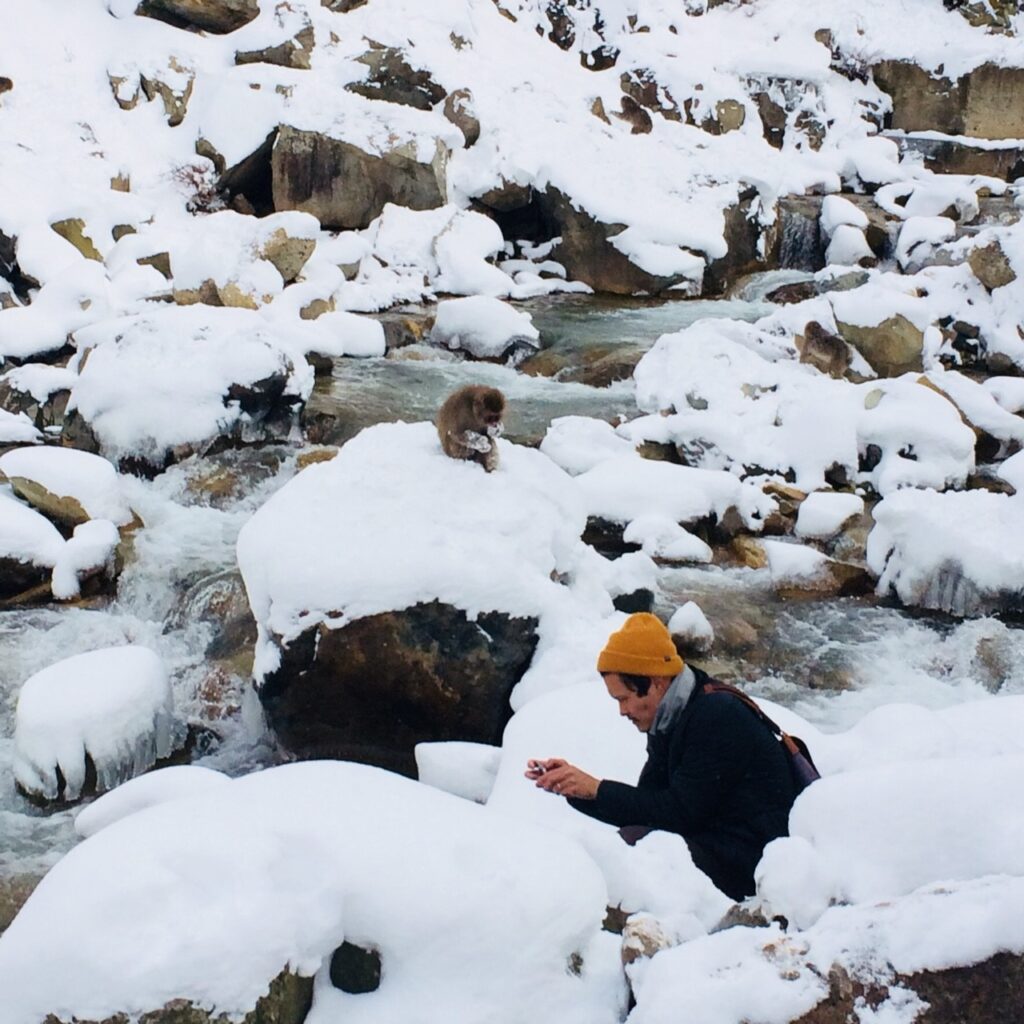
Male monkeys weigh 6 – 18 kg (13 – 39 pounds) while females weigh 6 – 14 kg (13 – 30 pounds) with a height that ranges from 47 to 60 cm (1.5 – 2 feet), depending on age. Macaques have a short tail, about the same size of a human finger, which is different from the image many people have of long-tailed monkey species. It is estimated that just over 100,000 Japanese macaques live across Japan.
Japanese macaques have opposable thumbs so they can grasp things between their fingers and thumb, much like humans. But unlike humans, they can also grasp things like this with their feet, which are long in comparison with their hands. When it gets colder the monkeys curl their feet up and try to not let their feet touch the cold snow as the palm of their feet, and hands, are very sensitive to temperature.
Why do the snow monkeys bathe in the onsen (hot springs)?
It has long been thought that the primary reason why the monkeys bathe is to survive the cold of winter hence the common sight (between December and March) of numerous monkeys in the hot spring. However, recent research has shown that the monkeys do so as a form of stress relief, with a particular tendency for pregnant (or females attempting to become pregnant) monkeys to spend longer periods soaking.
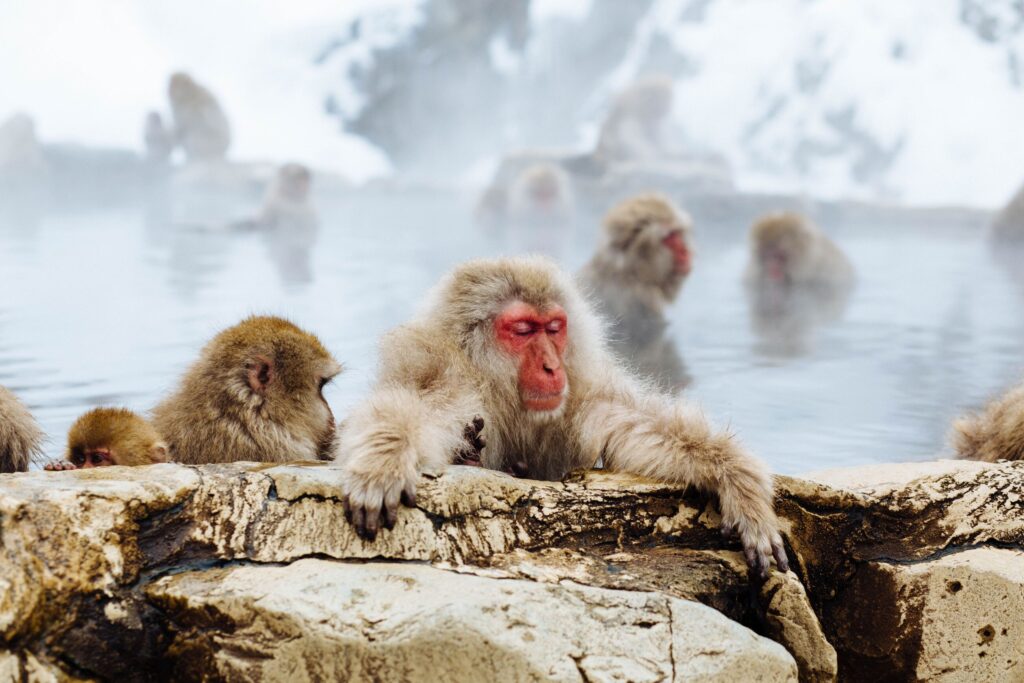
Outside of winter you will not see as many monkeys in the hot spring however they still enter the water to relax, swim, play, and grab food that has fallen in. This unique behavior was first observed at a ‘ryokan’ (traditional guesthouse) called Korakukan (pictured below), situated just outside of the monkey park. Having seen human guests soaking themselves in the water, the monkeys gave it a shot themselves and were hooked.
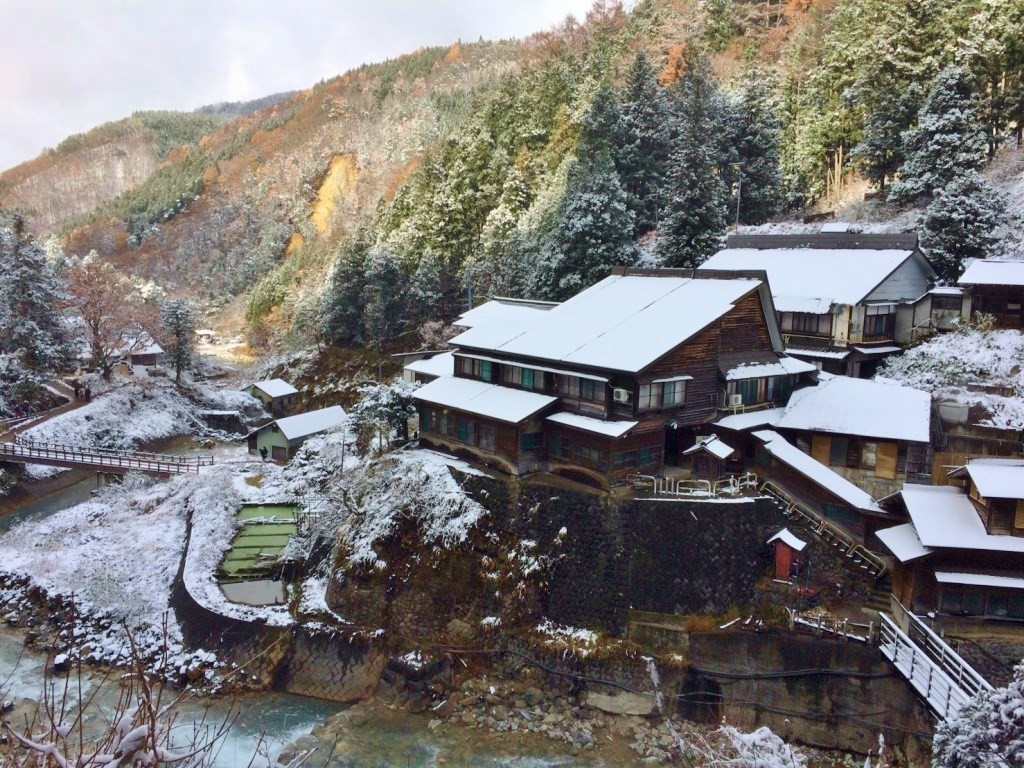
While this immediately proved to be a popular sight for visitors, it was hardly hygienic to have monkeys and humans sharing the Onsen, and the pool in the monkey park was created to give the monkeys a hot spring over their very own. Nagano and Central Japan is home to numerous Onsen including some of Japan’s most famous hot spring towns. For more information, please refer to our ‘Best Onsen (Hot Springs) Near the Snow Monkey Park page.
How many monkeys are there in the park?
There are an estimated 150 to 160 macaques in the troop that frequent the Snow Monkey Park. Around 60 to 70% of monkey are female, with each monkey’s lineage traced through its mother. Park staff know pretty much every one of the monkeys by sight, based on their facial characteristics and individually coloring.
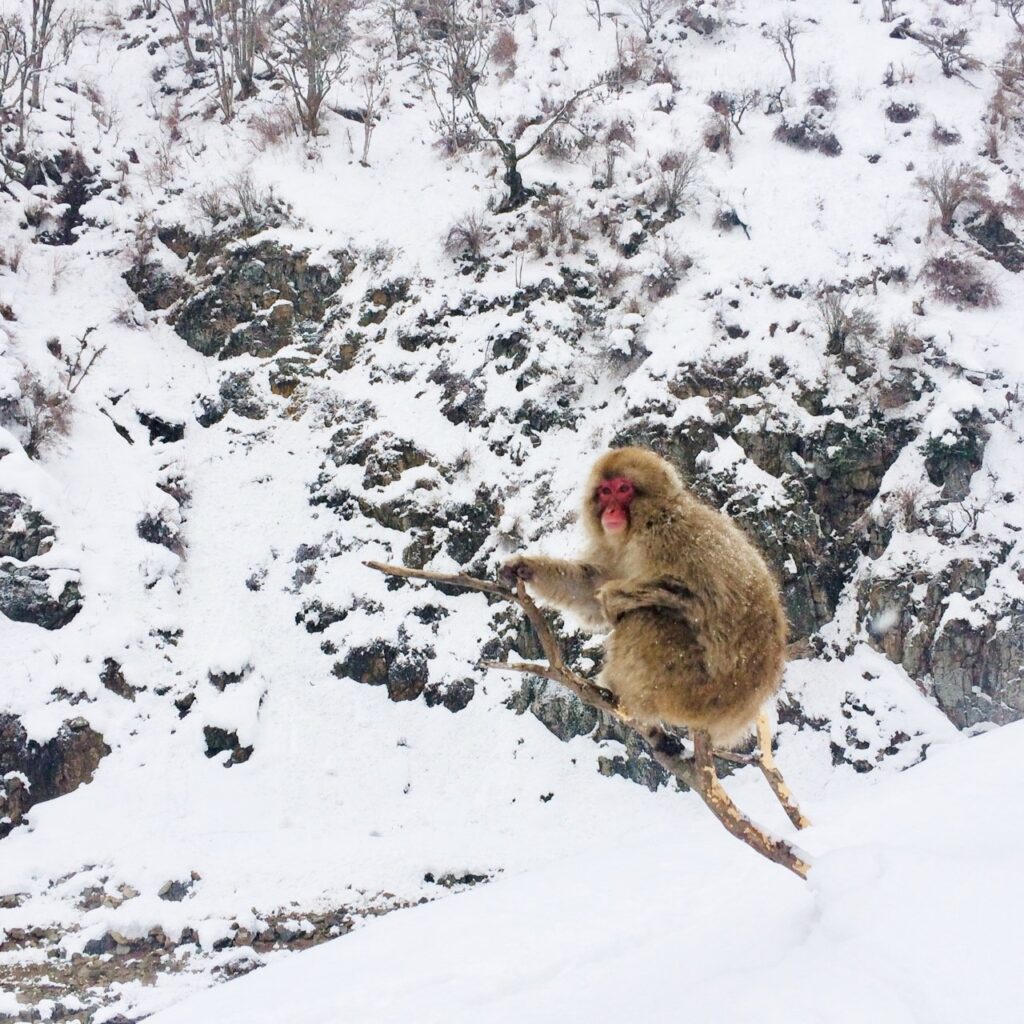
Japanese macaques live in troops consisting of and females, juveniles and babies. Once they reach their maturity, males tend to leave their troop of birth and move from troop to troop or start their own small, independent troop. To avoid confrontation, other troops do not come into the monkey park but instead frequent human residential areas. You may bump into those monkeys around the bus stop or if you are staying in the nearby village of Shibu Onsen. If you do, you should take caution with plastic bags, as the sound attracts monkeys who know they may contain food.
How can we distinguish male and female monkeys, and individual monkeys?
While young, it is quite difficult to distinguish whether a monkey is male or female. Once they start maturing it becomes more apparent due to the scrotal sac on males or the elongated nipples on females. Females also tend to have a lighter fur while males often have darker fur. Distinguishing between individual monkeys also becomes easier as they age due to wrinkles on their face, fur coloring, and scars and injuries picked-up through their lives. The personality of individual monkeys also becomes more apparent to park staff and frequent visitors, who can often tell one monkey from another based on its characteristic behavior.
What kind of social structure do Snow Monkeys have?
Though monkey troops are mostly female, at the top of this hierarchy sits an ‘alpha male’ – the No.1 monkey and boss of the troop. Every monkey within the troop is named by park rangers with its lineage accounted for, with specific monkeys holding the highest ranks.
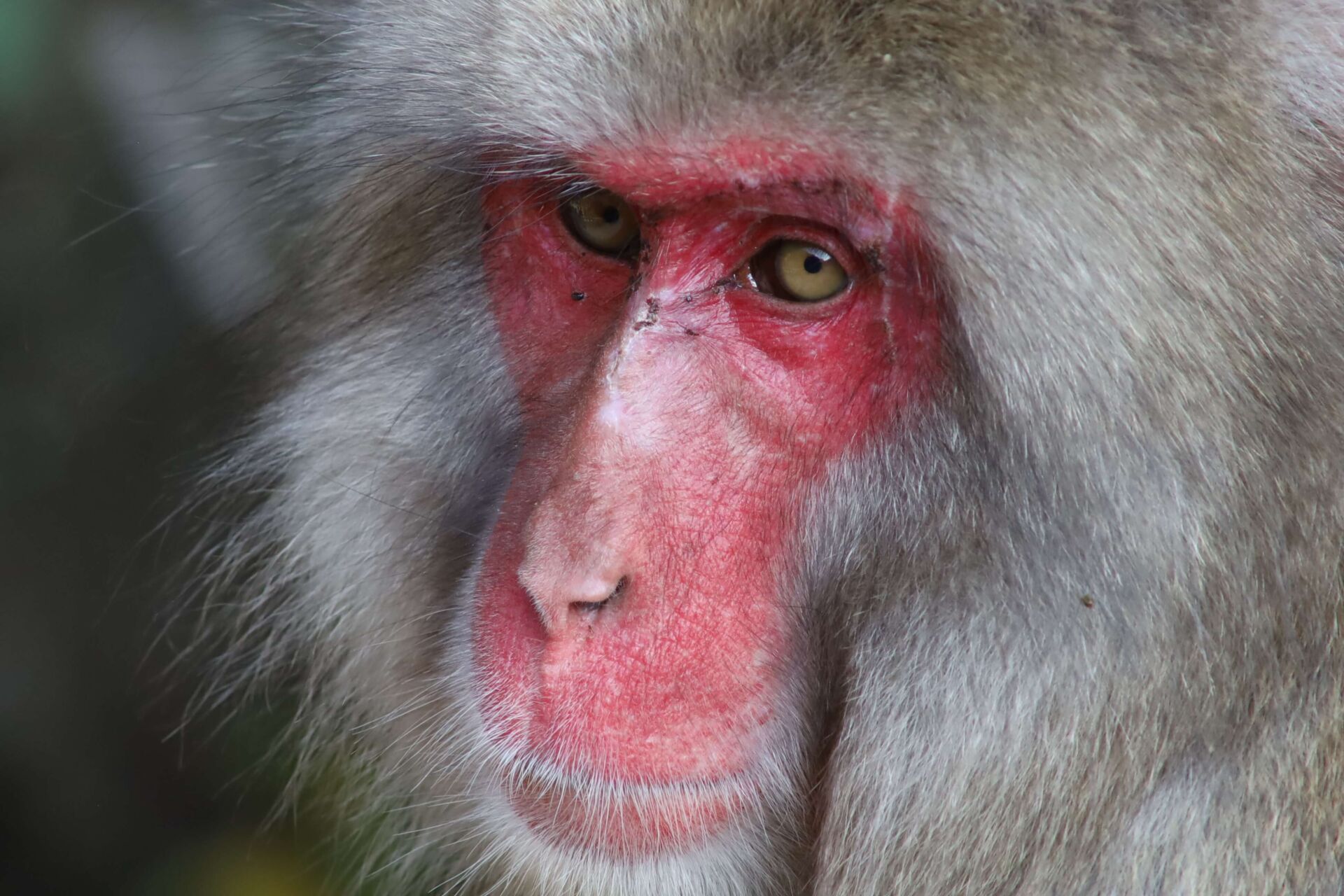
Many males, particularly those who are young or physically weak, will live apart from the main troop. Being unable to compete in the sometimes harsh male monkey social hierarchy, these monkeys will band together in their own smaller groups. They may eventually reunite with a larger troop, or travel for better opportunities. At the park, you can often see these monkeys nearby the entrance in smaller groups. For further information on the ins and outs of monkey society, see our ‘Snow Monkey Hierarchy: The Top Monkeys‘ page.
How does a monkey become the Alpha Male?
The rank of male monkeys changes all the time. Males usually leave their birth troop upon early maturation – usually between five to eight years of age. Usually, the rule is that the longer a monkey is with a troop, the higher its rank is within that troop. Also, male monkeys who develop a good relationship with the alpha female will rise in status and have more chance to become the alpha male.
The most typical way to become alpha is by death of the former alpha or if the former alpha leaves the group. The alpha male could also lose his rank because of another monkey being stronger and more suitable for the role. The alpha male is dominant and respected by other monkeys, but he is not the only male monkey with status and there are often multiple mature males with their eyes set on becoming alpha. For some, they will see it as a waiting game and bide their time while others might try to force the issue and challenge the alpha.
What age do the monkeys live to?
Japanese monkeys can live up 25 to 30 years of age, with the oldest monkey in the park currently around 24 years old.
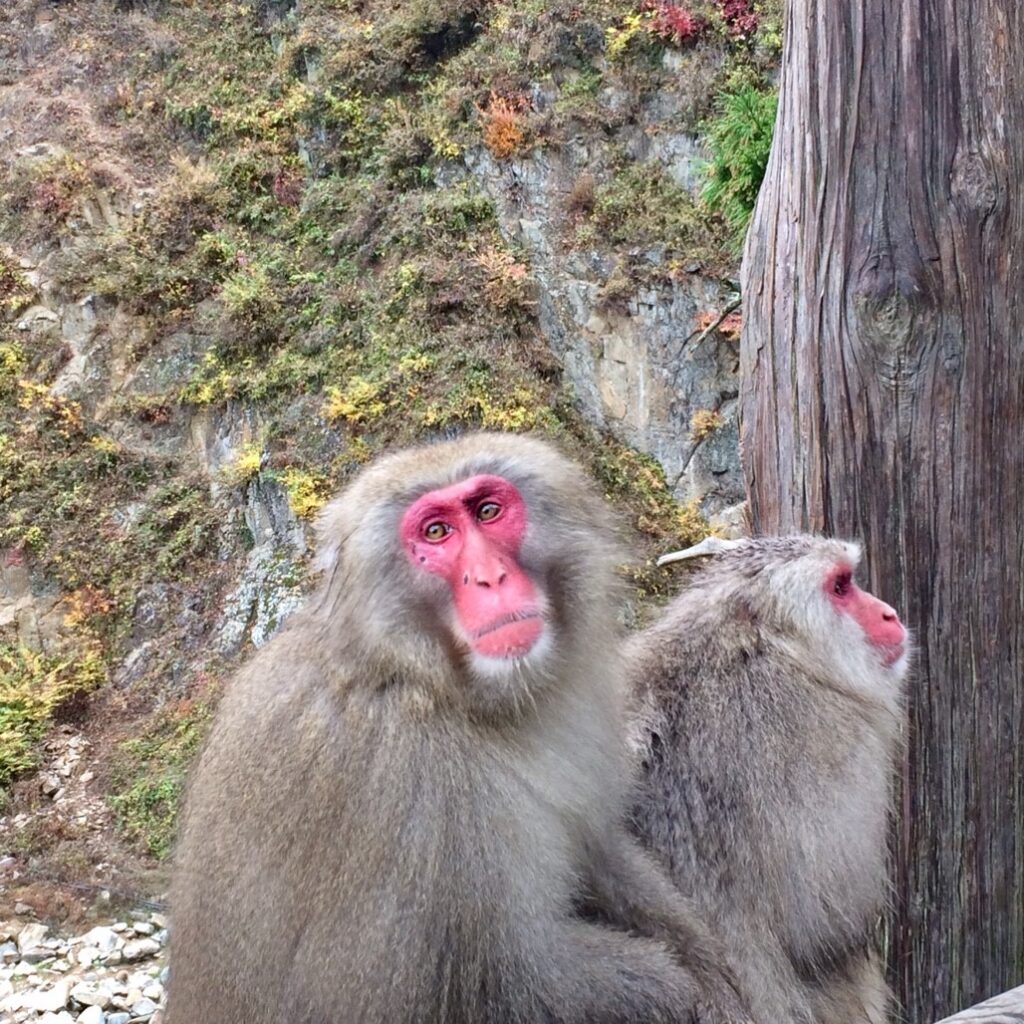
As they age, their skin becomes wrinkly, they lose muscle-mass and become smaller, and often get a crooked spine. So just like humans, they tend to show their age.
Why do the monkeys groom each other?
Social bonds are established and strengthened (in part) through the endless grooming that the monkeys engage in. When you visit the park you will quickly notice that grooming is a time-consuming part of each monkeys’ day, something which you need to engage in if you want to succeed.
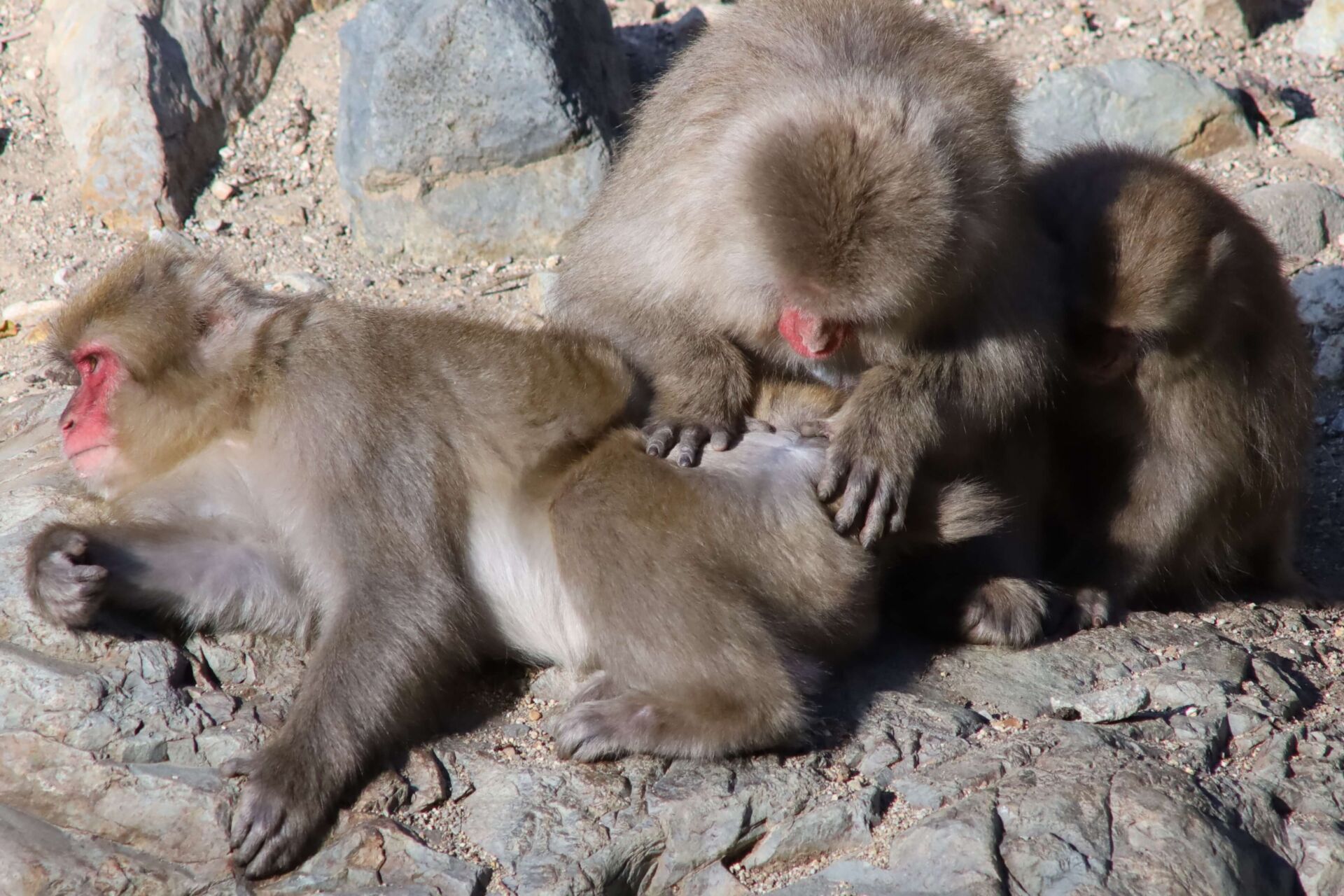
Family members will groom each other and come mating season, males and females who interested in each other will do the same – an important step in selecting a mate.
When is mating season?
Reaching sexual maturity from 5 to 6 years of age (males) and 4 to 5 years of age (female), the macaque mating season comes around every autumn – from October to November and into December – just before the first snow of winter falls in the park. During mating season, males will stand straighter than usual and flex their monkey muscles, intentionally pumping them up to seem more masculine and tough.
Females signal to the males they are interested, inviting them to mount. Through mating season, the monkeys will mate with multiple partners, with males higher in the hierarchy being more popular and desirable for potential female mates. Just like us humans, some males aren’t in demand and go ignored, or even actively avoided, by females.
When are baby monkeys born?
Spring heralds the arrival of the years baby monkeys. Typically born between late-April to late-June, the newborns are tiny – measuring a mere 15 to 20cms – and cling to their mothers, who are understandably very protective of their newborns.

Suckling milk quickly strengthens the babies and before long – literally within 3 to 4 weeks – the little ones are taking their first clumsy steps around the park. These first steps are understandably awkward, with the babies regularly stumbling over rocks and falling-out of small shrubs as they attempt to climb. Within 2 to 3 months the little ones are fully mobile and are drawn to each other, forming adorable baby gangs.
How do they communicate with each other?
Much like humans, macaques communicate using an array of verbal sounds, facial expressions, and attitudes. Verbal sounds may not be considered language as such but conveys their attitude to other monkeys. Japanese macaques can be very vocal at times and you will notice a large scope in the sounds that they make, from high-pitched calls to guttural, aggressive shrieks. Listen to them and try to guess their meaning!
Where do they sleep?
The monkeys generally leave the park each night and go back into the mountains. The park is within their natural territorial radius – a region of several kilometers – and they move to a new place to sleep almost every day. They always sleep in elevated positions, most commonly in trees but also choose cliffs on some evenings, and tend to sleep with their relatives or close friends, cuddled up during the cold nights of winter.
When and why do the park staff feed them?
The monkeys are fed by park staff two to three times a day. They are usually given barley seed or soybeans with apples handed-out during green season. The monkeys were first fed in the 1950s to keep them interested in the region in and around the park. During that period, the development of nearby ski resorts was forced the troop out of the mountains and into areas of human habituation, where they learned to raid farms for crops and vegetables.
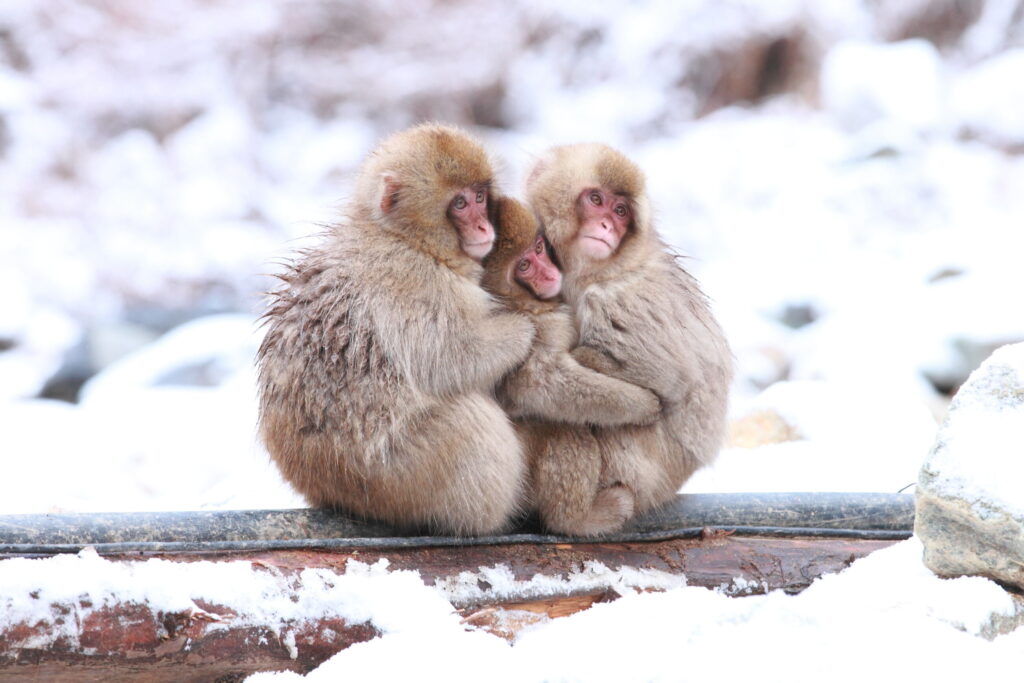
Local farmers were understandably frustrated by this and saw the monkeys as pests. One of the founding reasons for the park was to give the monkeys somewhere to go where they’d be safe and feeding was first introduced in an effort to get them to stay put, for their own safety. After a little trial and error, their favored staples of barley, soybean, and apples were identified and they have been fed ever since.
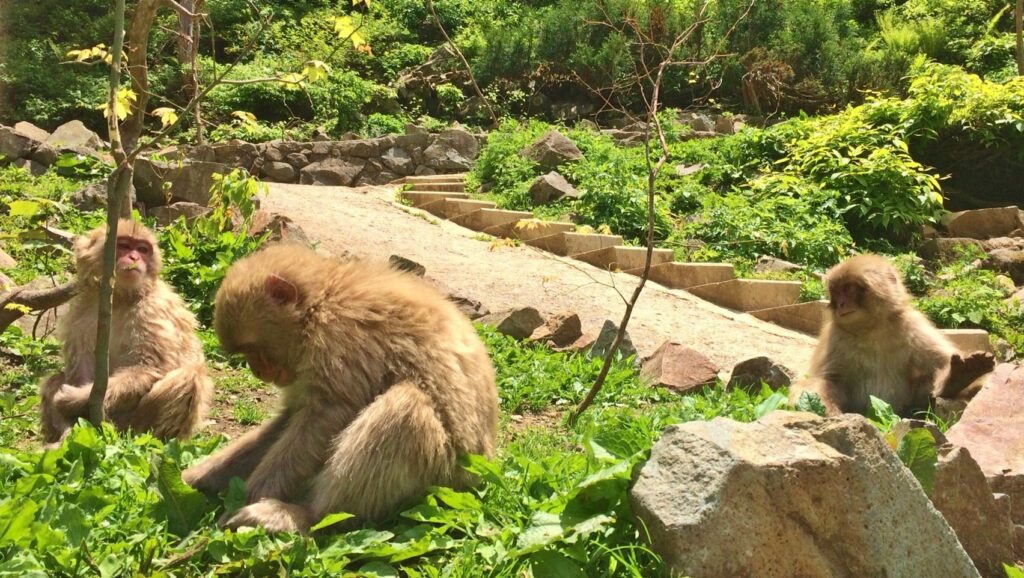
It is worth noting that the monkeys are not given enough food to survive on and they still need to fend for themselves. Please note that visitors are not allowed to feed the monkeys under any circumstances.
What do they eat besides the food given by the park staff?
During the spring, summer, and autumn the monkeys forage through the mountains in search of wild vegetables, nuts, flowers, fruits etc. It is far more troublesome in winter, when food is much more scarce and buried under the snow, with tree bark and winter buds being the only reliable food in the mountains. For this reason, they will gorge themselves on the abundant food options available in Autumn in order to build up enough body fat to survive until the Spring.
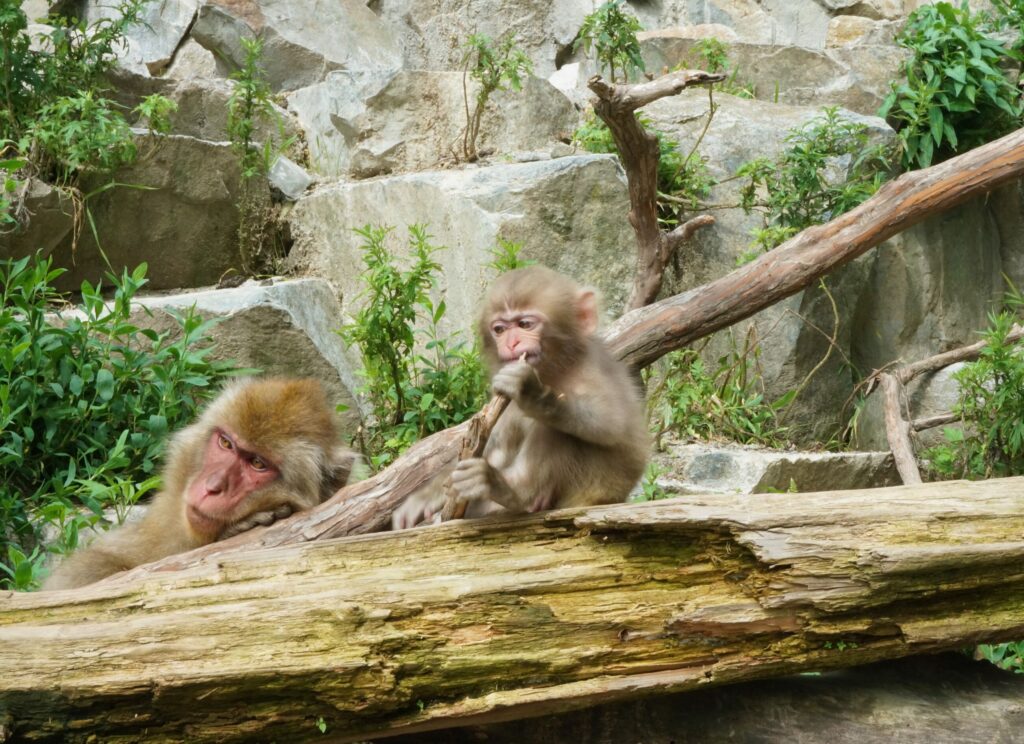
Evidently this is not a favored food for the monkeys, who rarely eat it in spring, summer, and autumn.
What are the differences between the Japanese macaques and other monkeys around the world?
Japanese macaques are the only monkeys able to survive the extremes of cold and snow in northern Japan, regularly enduring temperatures of -10°C / 14°F. Visitors to the park find the monkeys to be very docile and relaxed compared to monkeys in other parts of the world. The monkeys tend to just ignore you as long as you don’t stare at them, get too close, or show them any food.
Do they bathe outside of winter?
Sunbathing? Yes. In the hot spring? Not so much often as they do in winter. Through spring, summer, and autumn you may well see monkeys bathing, swimming, or sipping from the onsen, but unlike winter you are very unlikely to see large numbers in the water at one time and it’s not uncommon for extended periods to pass by with no monkeys in the water at all.
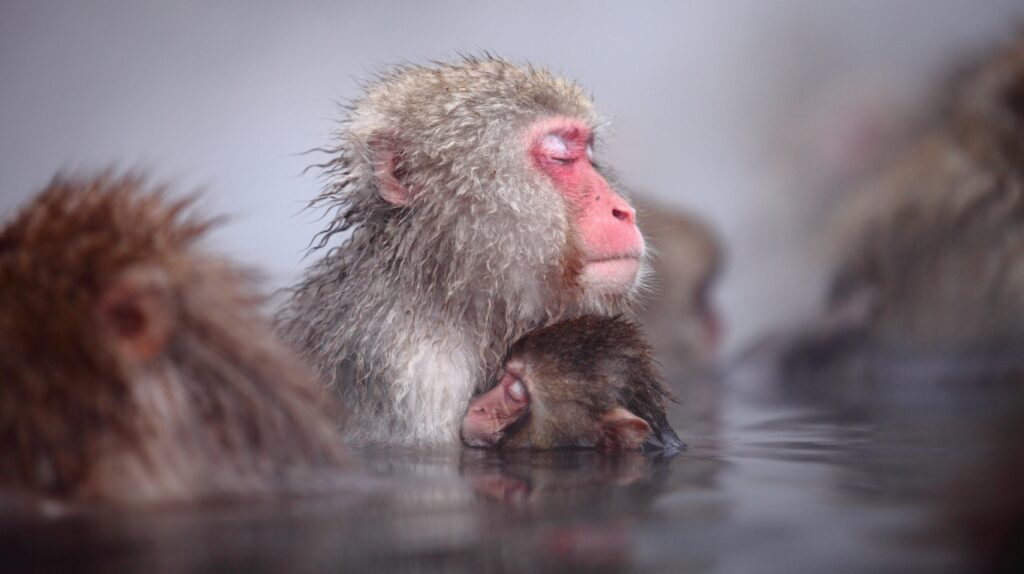
Like humans, the monkeys’ behavior is affected by the season, temperature, and weather. In the depths of winter they tend to stay still to conserve energy and cuddle with each other to stay warm. In the warmth of summer they are more active and move around the park.
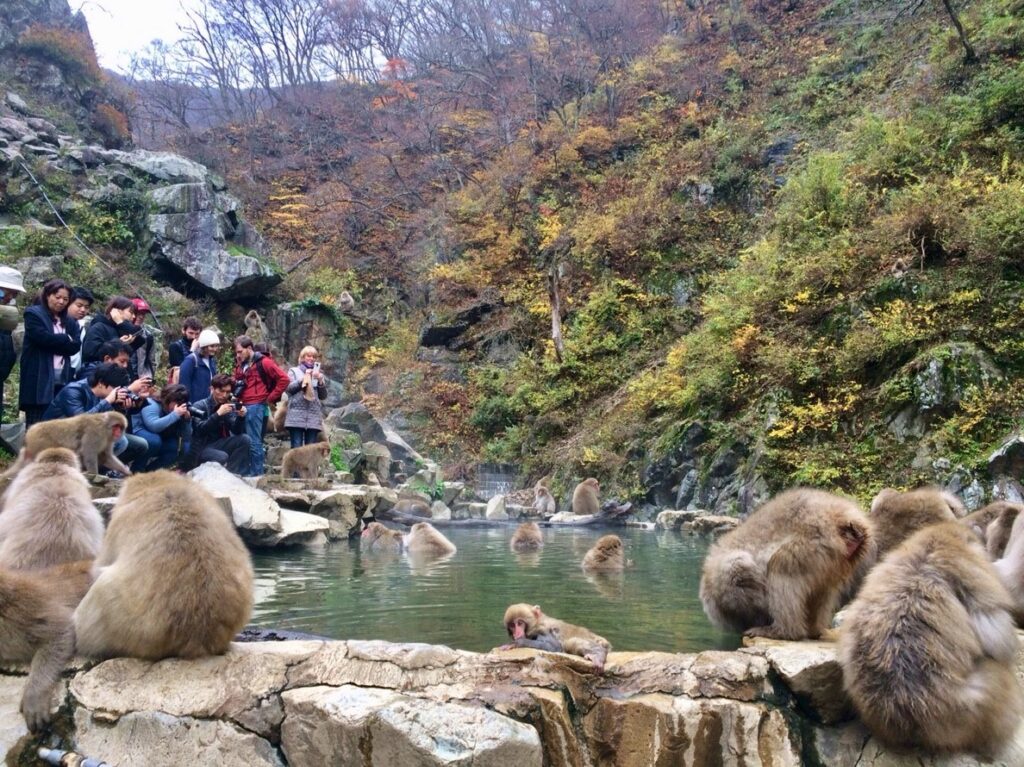
Of course, when it gets too hot you’ll see them dozing in the shade or sprawled out on the path defeated by the summer sun.
What do the park staff do for their work?
The staff are their to ensure the well-being of both the monkeys and visitors to the park. Feeding the monkeys is part of their job. This takes places first thing in the morning, usually before any visitors are in the park, and again in late morning or the afternoon, when visitors are free to stand and watch.
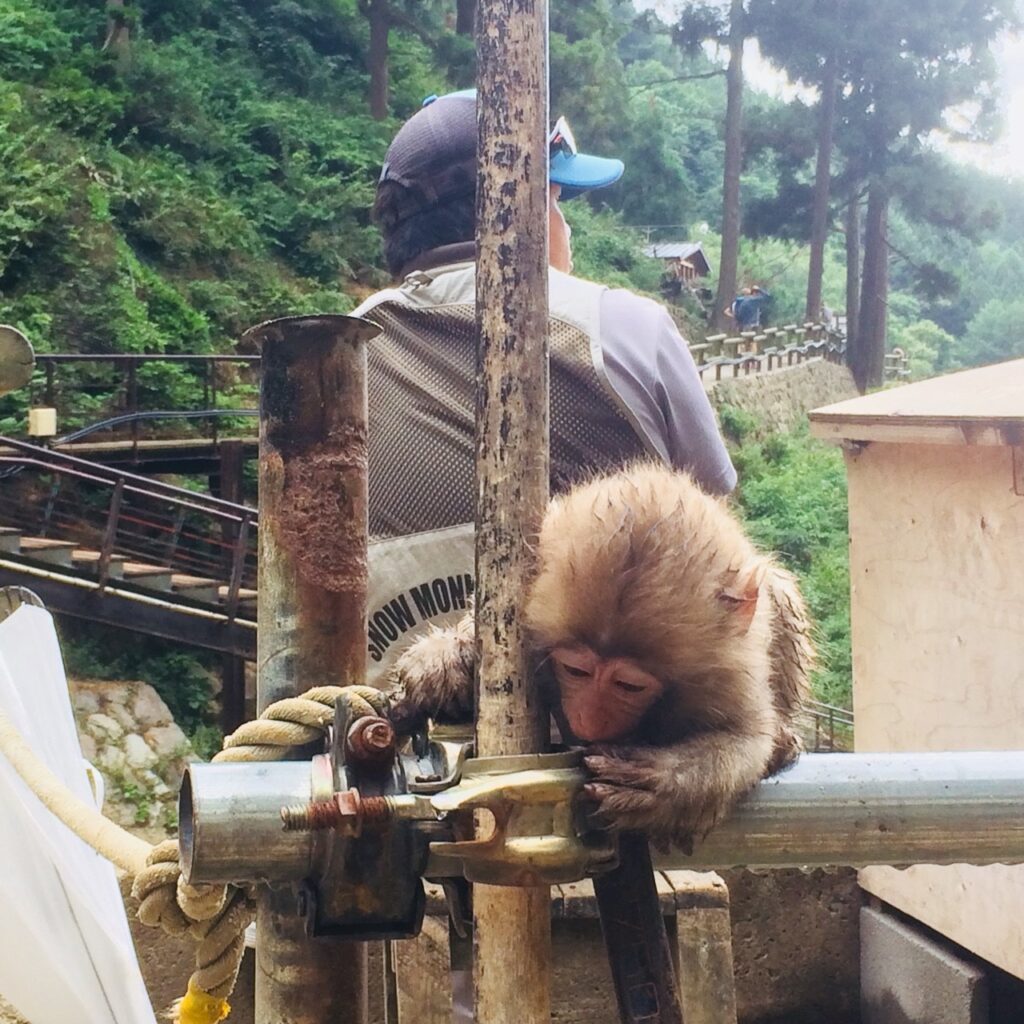
The staff always enforce park rules, again, for the safety of both the monkeys and visitors. This includes:
① ensuring that visitors do not attempt to feed the monkeys or show them any food. This rule is in place to stop the monkeys from associating visitors with food and then developing a habit of begging or stealing. In doing so, the monkeys retain their self-dependency and you will have the unique opportunity to be in close proximity to these very relaxed creatures.
② ensuring that visitors do not attempt to touch or get too close to the monkeys. The troop is very accustomed to human company and for that reason happily go about their daily business around you. Most of the time they will give you little attention or display a casual curiosity about you. It’s very rare that a monkey will attempt to take anything from you or be aggressive. If a monkey does attempt to take something from you, let them have it. If it’s food you will lose it. Don’t show them any (or anything that looks like food) and you’ll be fine. On the rare occasion that they grab something else, you’ll get it back. They have no interest in your wallet, sunglasses, or car keys.
TOURS AND CHARTERS TO THE MONKEY PARK

As Nagano’s No.1 tour operator, we are proud to offer multiple tours that combine a visit to the Snow Monkey Park with other fun local activities. No matter the season, we can help you make the most of your time in Nagano. Whether with your family or friends, or on your own, we are sure to have something that suits your needs!
1 Day Tour

| 1-Day Tour: Snow Monkeys, Zenkoji Temple & Sake in Nagano | |
|
| |
| Period | All Year Round |
| Time | 09:35 – 17:35 |
| Meeting Place | Nagano Station Hakuba (winter only) |
| Adult Rate | ¥17,800 |
| Child Rate | ¥11,000 |

Our most popular offering is our “1-Day Tour: Snow Monkey Park, Zenkoji Temple and Sake in Nagano“. Guests on this delightful excursion will first be treated to Sake Tasting and a guided tour of the historic Zenkoji Temple in Nagano, including lunch at a nearby restaurant.
With the first half of the tour complete, you will then depart for the Monkey Park on our private tour vehicle. Once you have arrived your guide will lead the way up to the place the Monkeys call home, before you once again board the bus and return to your starting destination.
1 Day Tour
| 1-Day Tour: Snow Monkeys & Snow Fun In Shiga Kogen | |
|
| |
| Period | December to March |
| Time | 08:45 – 17:30/18:00 |
| Meeting Place | Nagano Station Snow Monkey Park Area |
| Adult Rate | ¥21,800 |
| Child Rate | ¥13,300 |

For those guests coming in the Winter, we also offer the “1-Day Tour: Snow Monkeys & Snow Fun in Shiga Kogen“, combining exciting snow activities such as sledding and riding snow scoots with a visit to the Monkey Park. Lunch is also included, making for the perfect day trip for anyone looking to experience what winter in Nagano is all about!
1 Day Tour
| [Spring Only] 1-Day Tour: Snow Monkeys & Cherry Blossoms in Nagano | |
|
| |
| Period | April |
| Time | 09:35 – 17:30/18:30 |
| Meeting Place | Hotel Kokusai 21 Nagano Station |
| Adult Rate | ¥17,800 |
| Child Rate | ¥11,000 |

Another unforgettable tour is our “1-Day Tour: Snow Monkeys & Cherry Blossoms in Nagano“. Including two of Japan’s most amazing natural spectacles, the blooming of the Cherry Blossoms and the hot-spring loving monkeys of Jigokudani, this offering is the easiest way to enjoy a relaxed spring day in Nagano.
Private Tour
| [START FROM NAGANO CITY] Private Snow Monkey Tour | |
|
| |
| Period | All Year Round |
| Time | 09:00 to 17:15 ~ 18:30 |
| Meeting Place | Any location in Nagano City |
| Price | ¥122,000 ~ / group |

For those who want a more customized experience, we also offer private tours of the Snow Monkey Park and nearby attractions such as Zenkoji Temple. For more information, please click the link above or send us an inquiry describing your ideal itinerary.
CHARTER A VEHICLE TO THE SNOW MONKEY PARK!
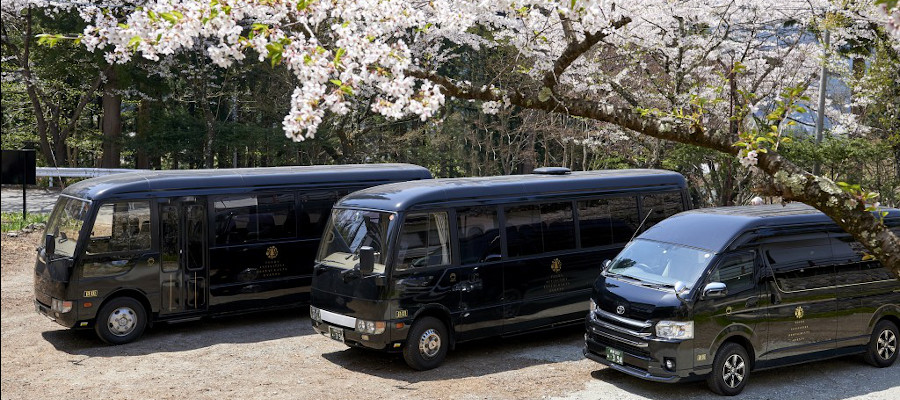
For those interested in private charter services, we would be pleased to provide a vehicle and propose an itinerary to suite your needs! Please see our charter page and send us your trip details so we can can start planning your journey together.
SNOW MONKEY RESORTS INFO & GIFT SHOP
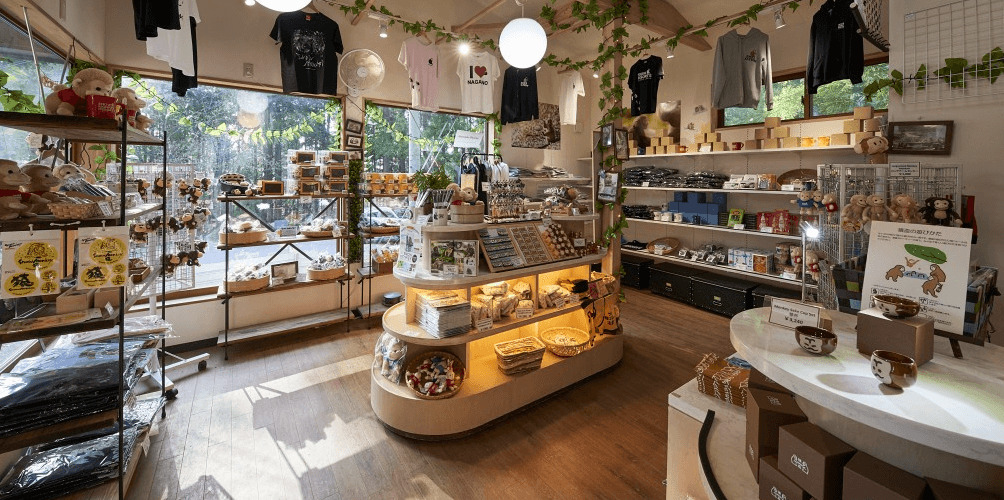
Offering a range of services including winter rentals and English language information, luggage storage, along with monkey merchandise and souvenirs including official Snow Monkey Resorts products, the Snow Monkey Resorts Info & Gift Shop has you covered when visiting the park. Open from early October until late May, 9AM to 5PM, English-speaking staff can answer your questions on your way to and from the park including information about bus timetables and nearby attractions. For more information, see our ‘Snow Monkey Resorts Info & Gift Shop’ page.


